Victoria over at Unschooling Math wrote a post called, “Many Paths to an Endpoint” regarding her discovery about the differences between learning math as a right-brained dominant person and a left-brained dominant person, inspired from my post here. Instead of leaving a lengthy comment, her questions about how each of the math minds fit into the learning process prompted me to write this post.
Victoria starts off her post remembering her days in a university geometry class required for all math teacher majors. This professor taught using big picture concepts and ideas about math and helped his students apply that knowledge to learning about math. Victoria noticed that students either loved or hated the professor. At the time, she wasn’t sure why.
It reminds me of my high school algebra class. I had “always been good at math” since elementary, so although this level math wasn’t required, I took it because I felt I should continue to develop my “math talent.” What I remember most was this young, new math teacher, who was so excited to share his love of math with high school students. He taught math totally different than anyone up to that point. He was teaching concepts and application, and encouraging us to apply math formulas to reach the answer. I remember constantly thinking, “Why won’t he just give us the plain, straight-up math problems that I can plug certain formulas into? I can do those easy-peasy.” Unfortunately, I can’t tell you how I coped because I eventually flunked out due to my inability to stay awake to learn because the math class was first period, and I just couldn’t get myself not to fall asleep almost daily (teen sleep deprivation being a whole other topic in school). It was SO frustrating! It was my only class I ever flunked (I was typically an A/B student).
So, what was going on in these two higher level math class examples? I believe it was the clash that occurs when a left-brained arithmetic person meets a mathematics-centered class. Mathematics is the concept and ideas of numbers 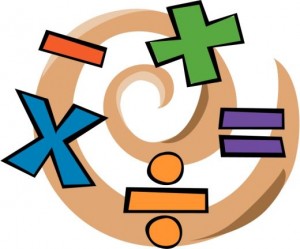 and patterns. Arithmetic is manipulating numbers. I was great at manipulating numbers! It’s neat and precise and organized and logical. I eventually understood the concept of what addition, subtraction, multiplication and division constituted, but as it pertained to algebra or geometry, I had no clue why I was learning these things or what real life application any of it entailed. Frankly, I still don’t. If I never learned the concepts or application behind the formulas, not making it through higher level math well was inevitable.
and patterns. Arithmetic is manipulating numbers. I was great at manipulating numbers! It’s neat and precise and organized and logical. I eventually understood the concept of what addition, subtraction, multiplication and division constituted, but as it pertained to algebra or geometry, I had no clue why I was learning these things or what real life application any of it entailed. Frankly, I still don’t. If I never learned the concepts or application behind the formulas, not making it through higher level math well was inevitable.
Right-brained people are more natural with mathematics, if it’s an area of natural interest or talent. Left-brained people are more natural with arithmetic, if it’s an area of natural interest or talent. I barely scraped a C grade in geometry. With its shapes, space, theorems, and concepts, geometry is best suited for right-brained learners. With its processes, formulas, and multi-steps, algebra is best suited for left-brained learners. As a strong left-brained learner, I enjoyed algebra, and disliked geometry. My builder son, who is natural at and enjoyed math at a young age, came home from a physics class at the community college declaring, “It’s applied math!” He proceeded to sit down with his textbook after the first day in class and spent 3 to 4 hours just playing with the ideas of math through physics. It’s why this same child is choosing to go into computer programming; it’s patterns and math application.
In my post about math that Victoria referenced above, I mention that there are two types of right-brained math minds: visual-based and kinesthetic-based. Victoria was surprised to hear me say this because she thought all students would prefer a visual or kinesthetic approach to learning. This isn’t true, necessarily. My writer daughter interacted with math in a left-brained manner. I 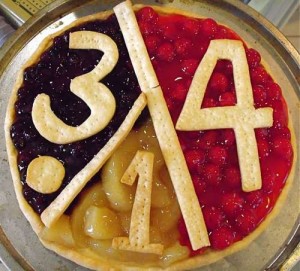 became so used to presenting math in a right-brained manner, that when she would come to me requesting help, I often would start with some kind of visual, such as, “Well, let’s pretend it’s a pizza (or pie).” She would run from the room, screaming, “No, not the pizza!” She would then go to her father, who would give it to her straight up, plug in the formula, don’t worry about understanding it, and off she would go, happy to complete her math. I was the same way; don’t hurt my brain making me understand the concepts behind it. Just let me do the problems, get the right answer, and receive my A. Isn’t that what we’re taught is the most important thing in school? The right answer and the A?
became so used to presenting math in a right-brained manner, that when she would come to me requesting help, I often would start with some kind of visual, such as, “Well, let’s pretend it’s a pizza (or pie).” She would run from the room, screaming, “No, not the pizza!” She would then go to her father, who would give it to her straight up, plug in the formula, don’t worry about understanding it, and off she would go, happy to complete her math. I was the same way; don’t hurt my brain making me understand the concepts behind it. Just let me do the problems, get the right answer, and receive my A. Isn’t that what we’re taught is the most important thing in school? The right answer and the A?
And, thus, here lies our dilemma. As Victoria began to teach math in school, she was running into the same percentage of students who either loved her presentation of math, or hated it. Some could grasp it; some couldn’t. Victoria’s question then becomes:
I wonder how it would look for a classroom to simultaneously support both sequences of learning.
And Victoria’s subsequent criteria:
I am still convinced that both “arithmetic” and “mathematics” must be supported within a child, even in the early years.
I agree that one would want to expose students to both arithmetic and mathematics in the early years, otherwise, how else can one figure out which is preferred? However, I also strongly encourage supporting our different learners in the way they best would learn math. I share what the right-brained math path 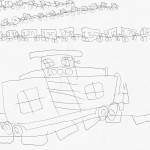 and left-brained math path look like at my previous math post. As each brain dominant preference works its way through how it assimilates information, each should be honored. I share in my developmental time frame post how the early years of 5 to 7 is for feeding your brain dominant preference in learning, the 8 to 10 year time frame is
and left-brained math path look like at my previous math post. As each brain dominant preference works its way through how it assimilates information, each should be honored. I share in my developmental time frame post how the early years of 5 to 7 is for feeding your brain dominant preference in learning, the 8 to 10 year time frame is 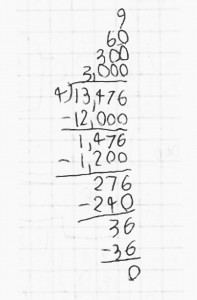 for beginning to transition into learning the less dominant brain strengths, and the 11 to 13 year time frame is for fully integrating both sides of the brain. We can’t force a left-brained dominant person to do better in concepts (I hated word problems!) before the appropriate developmental time, and you can’t force a right-brained dominant person to do better with math facts before the appropriate developmental time, at least without a lot of math angst.
for beginning to transition into learning the less dominant brain strengths, and the 11 to 13 year time frame is for fully integrating both sides of the brain. We can’t force a left-brained dominant person to do better in concepts (I hated word problems!) before the appropriate developmental time, and you can’t force a right-brained dominant person to do better with math facts before the appropriate developmental time, at least without a lot of math angst.
What would need to change in order to honor both math minds? We need to change how we assess learning from testing to portfolios. And we need to change from a standardized education to a strengths-based education. When we use testing as our primary way to assess, we tend to use measurable tasks. At this time, if a right-brained child takes a standardized test and does poorly in the math facts section, but well in the concepts section, it will be expected that he put in more work in math facts in order to be “even” with the standard. Instead, with a strengths-based education, the right-brained learner will get to expand his ability with math concepts while continuing to be exposed to math facts. A lack of development in one area won’t prevent his continued progression in another. In his portfolio, the write-up will acknowledge his strengths and how he is building on those, and note where he is at in developing his math facts. Like a pediatrician’s office, he may be put on a chart showing right-brained and left-brained attributes, where he would fall more heavily on the right-brained side of the chart. In this way, it would be noted that his development is progressing normally for a right-brained learner. Specific notes may appear such as the student preferring mental math processes for his concept work, and that he uses his fingers for math facts. This gives a lot more information.
All of this said, I’m not a believer in all people being proficient in both right- and left-brained specialties. If the brain were able to be standardized, or equalized, which I don’t think it can or should, we would lose what those who are strongly right-brained or strongly left-brained bring to the table. So, let’s take that same right-brained math learner above, and say that by the time he’s 14, he’s integrated many of the math fact skills, though he may still consistently make “mental errors.” Or maybe he chooses to use a calculator. Does that have to be bad? Or what if he decides, as most people will, that math isn’t his field of choice, and he drops math after first level algebra and geometry? He pursues his manga artist career and hires an accountant. Isn’t that sensible? The good news about honoring the natural developmental process for both math minds is that those who truly have an interest or gift in the subject will still have a positive relationship with math in their later years and will bring to the math field all that will benefit our world. We won’t lose great mathematicians (which tends to be right-brained learners) along the way from a mismatched early math learning environment that doesn’t honor their natural path to math development.
I repeat Victoria’s question, I wonder how it would look for a classroom to simultaneously support both sequences of learning? It would be an exciting day for both minds, in math, or any other subject! This is at the heart of education reform that I will continue to fight for through writing about understanding and honoring the natural learning path for right-brained children.
Question: What math attributes have you noticed in your right-brained learner that shows a math mind, or what processes have you noticed that make it difficult for you to honor their particular math developmental path to learning?
OR
What do you think it would look like to support both math minds in the classroom setting?

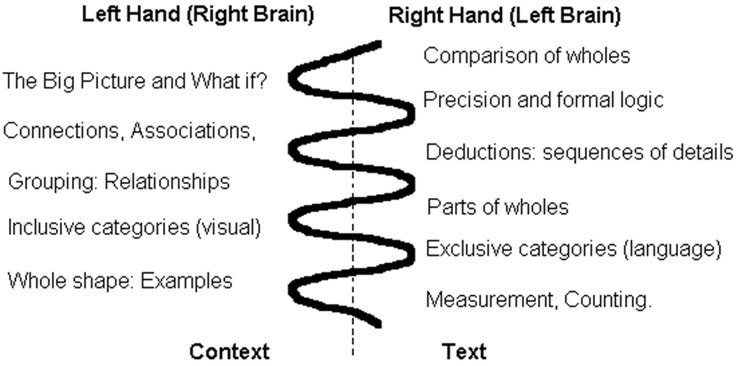

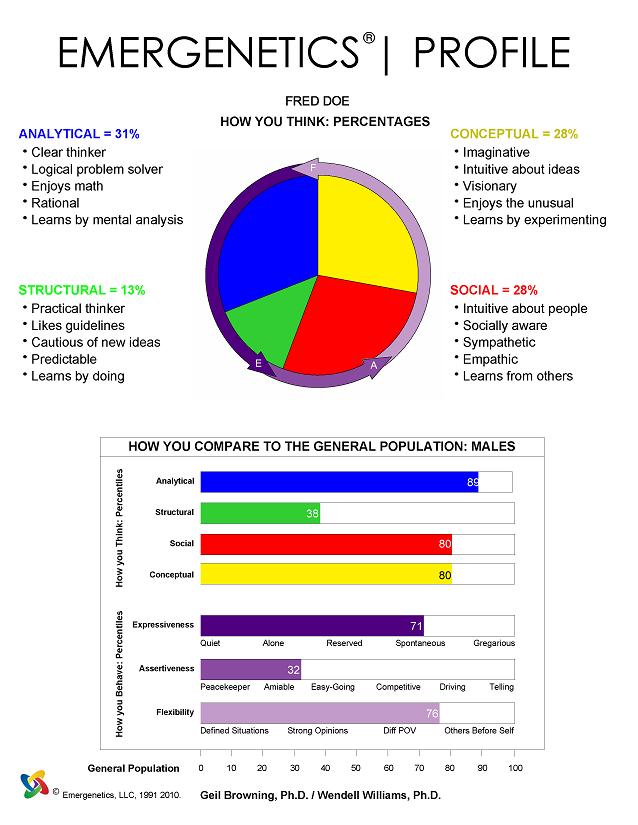





Pingback: Teacher Talk: Math Corners | The Right Side of Normal
Pingback: Your Child Might Be Right-Brained If … | The Right Side of Normal